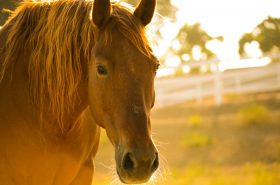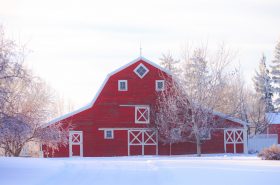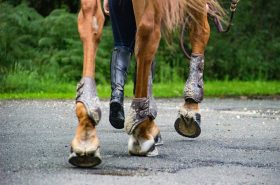There is no specific age when a horse may need to be transitioned to senior feed.
Instead, it will depend on several factors, including how good of shape the horse’s teeth are in, how they’re
holding body condition, and if they’re able to eat a normal amount of hay (1.5-2% of their bodyweight daily)
I’ve switched horses over to senior feed when they were around fifteen, while others made it into their
twenties before I had to make that change.
When choosing a senior feed for your horse, you’ll want to take a look at several things. First,
you’ll need to see which ones are available in your area. Then, you’ll want to compare all
available senior feeds when it comes to ingredients, fiber, protein and non-structural
carbohydrate (NSC) levels—and probably price as well.
Protein & Fiber
As horses age, they produce less stomach acid, which affects their ability to digest nutrients like
protein. Because of this, they will need increased protein content in their diet (since not all of it
will be absorbed). Finding senior feed with at least 12-14% protein is optimal.
Older horses also need plenty of fiber, especially if they’re not eating as much hay. Therefore,
choosing a senior feed that has at least 12% fiber is important to meet their dietary needs.
NSC Level
Personally, a low NSC level is important to me because some of my senior horses also struggle
with symptoms of Equine Metabolic Syndrome or Cushing’s Disease, where a low-sugar diet is
important. Keep in mind that a senior feed will make up for most, if not all, of the horse’s
nutrition, especially in winter. Therefore, you don’t want to overdo it with sugar and worsen any
metabolic symptoms.
Unfortunately, the NSC level of the feed may not be shown on the bag. Instead, you’ll have to
look at the manufacturer’s website to find it or possibly reach out to the company to ask.
Because not all horse owners are familiar with NSCs in feeds and hay, this isn’t something the
companies always advertise. However, most nutritionists will recommend that the NSC level be
around 12% or less for horses with any kind of metabolic issue.
Yes, senior feeds are pricier than many other types of feeds, but this is because they are often
nutrient dense and can replace all forage, if needed. Make sure to read the manufacturer’s
feeding directions and feed accordingly to ensure that your horse is getting the nutrients they
need!



